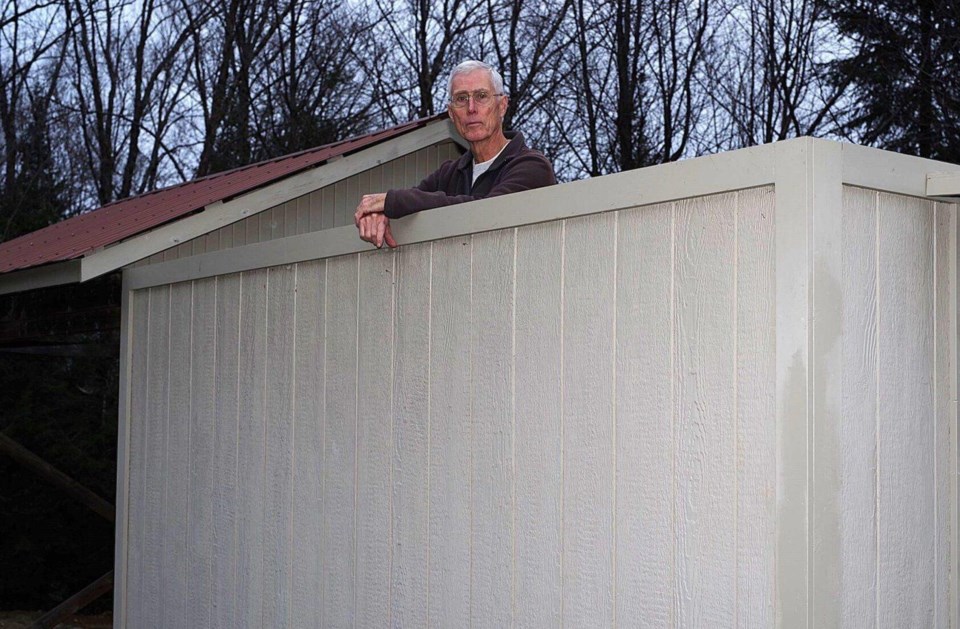As a kid in Etobicoke, it started as a hobby watching the night sky with a small telescope.
Little did Bob MacPhail, now 71 of Perry Township, know back then that his interest would grow to the point he would be making contributions to the international database of the American Association of Variable Star Observers (AAVSO).
As the name suggests, the organization tracks variable stars with help from amateur astronomers.
Such stars vary in luminosity by becoming brighter then dimming and growing bright again.
After amateurs spot the star, professional astronomers are alerted and take over with more powerful telescopes and tracking equipment.
“Professional astronomers are really interested in this,” MacPhail said. “They want to know when a variable star acts up. They want to know what’s going on and why the star is behaving the way it is.”
MacPhail’s interest in the night sky began when he heard President John F. Kennedy’s speech in 1962 that the United States would land a man on the moon before the end of the decade. MacPhail’s parents bought him a small toy telescope at the time and he started to look up at night.
“During the 1960s in Etobicoke, you could still see the Milky Way because the light pollution wasn’t that bad yet,” MacPhail said.
MacPhail also started paying attention to the Apollo missions, which culminated with the moon landing on July 20, 1969. Like millions of North Americans, MacPhail watched astronaut Neil Armstrong walk on the moon.
“Dad was a sailor and we were on a sailboat in the Thousand Islands and the boat beside us had this wee black and white TV,” recalled MacPhail.
That would have been well after midnight, but everyone on the boat stayed up to watch the historic first steps of a human walking on a world other than Earth.
After the moon landing, MacPhail’s interest in astronomy continued to grow and his parents bought him a real telescope.
MacPhail says he’s been fortunate over the years, including 20 in the military, to have lived in rural areas where the night sky was kept pristine because there was no light pollution.
As a resident of Emsdale, there's no reason for MacPhail to worry about losing that dark sky. Perry Township's official plan details that future developments in the municipality be dark-sky compliant. The township requires lighting on waterfront properties to be compliant and the amount of light coming from one property onto adjacent land, even over water, to be minimal.
MacPhail's hobby intensified when he and his wife moved to Armour Township in 1995 and bought a resort at Doe Lake.
He built an observatory to help carry out more astronomical observations and, years later when the couple moved to Emsdale in Perry Township, MacPhail built two more observatories.
One of the observatories has a retractable roof while the other, which is no longer standing, had a rotating dome.
During his younger days, MacPhail had five telescopes and was doing a lot of viewing from sunset to sunrise, getting by on four hours of sleep. He would look at planets, the moon, and also the sun thanks to special filters and far distant galaxies.
“But you can only keep looking at the same objects so many times and that’s how I later got into scientific research,” MacPhail said.
MacPhail followed 55 variable stars, which meant a lot of nighttime viewing.
He would track the same stars month after month and record when they became brighter or dimmer and then submit that information to the international database.
Because the night sky is so dark in the Almaguin Highlands, especially in Armour and Emsdale, MacPhail was able to observe very faint stars.
“There were some variable stars I was doing where maybe about a half dozen other people around the world were also watching,” MacPhail said.
This kind of viewing would not be possible in a large or mid-size community that emits large amounts of light.
“So, I and several others were doing something significant,” he said.
“Our goal was to identify particular stars and the professionals could then go in with better equipment, like spectrographs and satellites, to try and determine what’s going on.”
MacPhail has studied long-term variable stars, which take six to 12 months to go through one complete cycle of starting off bright, then dimming and returning to bright. MacPhail notes these stars are also similar to our sun.
The difference is they are much older and in the final stages of their existence; in other words, it won’t be long before they go supernova and explode.
The AAVSO sends its members certificates acknowledging their contributions. Over the years, MacPhail has contributed more than 1,000 observations.
MacPhail only did observations through his telescopes. He didn't photograph the objects because he says that’s a “whole different game and it’s a big step up and costs lots more money.”
MacPhail is down to one small telescope nowadays and also doesn’t do winter observations anymore, saying as you get older, you prefer to stay warm.
He says the moon is the easiest celestial object to watch. “It’s the best first object for anyone to look at because it’s so close,” he said.
The best viewing times are when the moon is less than half full because that’s when it casts shadows and that’s where the detail is found. A full moon is so bright it washes out the fine detail.
Next up is our solar system, including the sun.
MacPhail says using special filters, it’s “mind-blowing to see solar flares popping off the edge of the sun, sun spots and the sun’s texture.”
After our sun and planets, MacPhail says amateur astronomers look at the stars in the Milky Way and then peer deeper into space at far-off galaxies that appear as a white blurry patch similar to Q-tips.
Rocco Frangione is a Local Journalism Initiative reporter with Almaguin News. The Local Journalism Initiative is funded by the Government of Canada.
